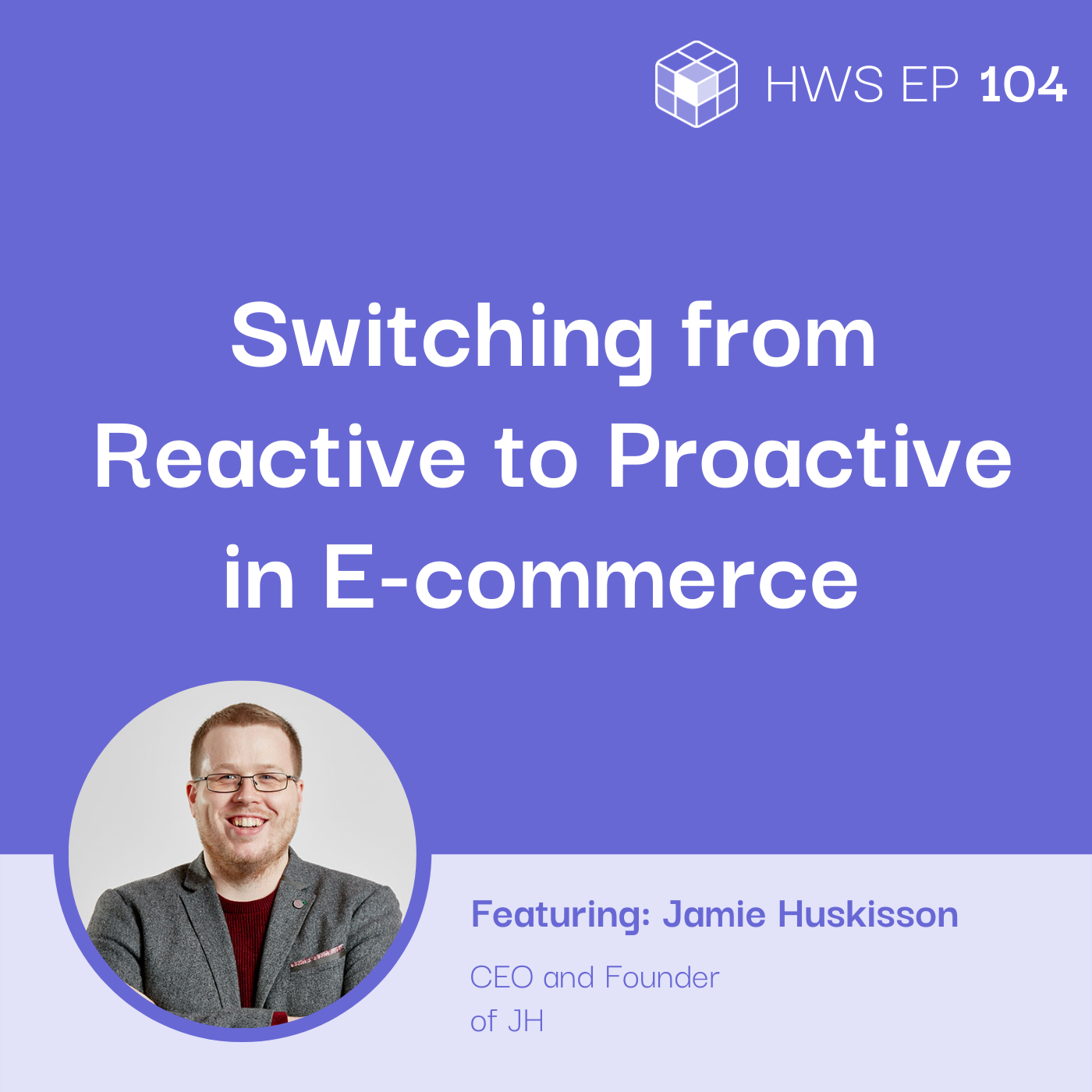Listen on:
Table of Contents:
Problem: How can you focus on building a proactive roadmap to support your eCommerce business’ growth?
A reactive strategy is a common strategy for many businesses, even for e-commerce businesses. As a result, they’re forced to play catch-up when competitors innovate or do something that solves the buyer persona’s problems. To compete effectively with their competitors, online businesses should constantly innovate. How can e-commerce companies move away from reactive strategies, and focus on building a proactive roadmap to support eCommerce business’ growth?
So, what we want to solve today is switching from reactive to proactive. So, everybody’s struggling with it, especially because there are so many newbies to the industry. Well, these jobs are creative. Some e-commerce has no idea generation strategy, doesn’t know a way to measure besides all we have to grow this year. And a lot of people just end up buying their competition.
Strategic Planning
Strategic planning isn’t just about focusing on a list of things you need to do as a team. It’s more tasks like responding to email, shipping, or talking to suppliers. It’s a combination of factors affecting the business, from going back to your core, to setting KPIs and conducting quarterly reviews.
A lot of people, if we generalize, come to work, they don’t have a plan for what they can do that day. Apart from a few meetings. And they will often open up their emails and resolve that. The definition of reactive. They’ll never be proactive until somebody says, “you need to go solve X”.
Step # 1: Start with your goal, write it down, and become ambitious
Ironically, many businesses’ slow growth can be attributed to just making money. When e-commerce businesses lose their core, their purpose, they stop making a difference in the world. Jamie encourages the listeners to ask questions that will help anchor their platform’s purpose. Questions like:
- What are we doing with this digital platform?
- Why are we in e-commerce?
Once you’ve answered these questions, plan your goals around this. When setting goals, don’t be afraid of aiming higher than what’s achievable.
Aim higher, and you will achieve more. So, you can aim for 50% growth and achieve something around 35 to 40 on average. If you’re aiming for 50%, whereas if you aim for 35, even if it’s achievable, but less typically on average. So, it’s extending out those goals.
Step #2: Set KPIs complimentary to your goals
The easiest way to start setting your KPI is by measuring and benchmarking against your performance. Sales are the easiest part to measure, but many factors are affecting sales, like:
- Customer service
- Loyalty
- Retention
Apart from setting conversion targets, set KPIs that will help you measure these other factors, so you can see immediately what areas you should pivot your strategy and what you need to focus on. Jamie advised that e-commerce businesses review the progress of these KPIs monthly and quarterly. If within three months, there are
It all starts with sales. Almost always, starts with sales, and you then want to start with the surrounding KPIs of what’s the biggest influences against that vision and against the goal. If I’m a customer service lead business, I’m going to talk about what’s raising the experiences that are out there? How many times did people come back? Are they happy, et cetera? And what are some KPIs around that? Instead of defaulting to things like conversion rate by themselves.
Step # 3: Organize and Rally Your Team Around It
By being vocal and transparent about your goals and the problem you want to solve. By sharing a brief about these things, encourage your team to volunteer who’s the most capable to help make that vision a reality.
If you’re walking people through it, and it’s a great idea. Send it to people, a page or two, not beyond the leisure point. Usually being bold, and they should say, here’s how I can help make that vision a reality.
Carve Out Time for Idea Generation
By regularly reviewing the KPIs, find out about what people are complaining about. Regularly discuss:
- What are these problems?
- What’s the one affecting your KPIs the most?
- What simple workaround on designs, interfaces, and features can you work on?
Jamie advises the team to intentionally set a time, at least once a month, to reflect and review these things and set a timeline on when to implement these design projects. He strongly advised to:
- Meet quarterly to review the strategy
- Measure the KPIs you’ve set
- How did the new ideas introduced are affecting the numbers and KPI
So if we have a customer support team, they’re often hearing all the customer’s complaints, all in one go. They’re almost always the majority source of all the complaints. But how often do we actually tell it to them? How often do we get that feedback until we say here’s something that people complain about on a consistent basis? And then how often do we do something about it?”
Why is it important to measure your KPIs?
(00:26:24) “The final one is to make sure you’re measuring. It is the ultimate way of looking at it, right? If you’re not reporting back to yourself, if you’re not checking in on those numbers, if you’re running things down, all for nothing, all that just stays in your head.”
Jamie Huskisson Recommends You Check Out These Resources
- Mastering the Rockefeller Habit
- For Consultancy and strategy workshops with JH email thrive@wearejh.com
This interview is part of the How We Solve podcast. To hear more from industry experts who are solving everyday business problems, check us out on Spotify, Apple Podcasts, and on our website.
About the guest

Jamie Huskisson
Is the CEO and founder of JH, an agency that focuses on helping e-commerce. They’re the top Adobe Gold Solutions Partner for Adobe Commerce (powered by Magento), consistently leading the way forward. Winner of four back-to-back Magento eCommerce Excellence awards for Best Mobile Commerce User Experience. He’s the lead organizer of the Meet Magento UK, the official Magento conference for the UK. The event features 500+ attendees, a world-class speaker line-up, and attendance from key Magento executives. It’s a conference that leaves attendees with a hundred ideas ready to implement.
How people can people reach Jamie:
Twitter: @jhuskisson | @wearejh
LinkedIn: Jamie Huskisson
Official JH website: https://wearejh.com/
Listen on:
